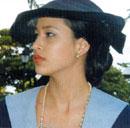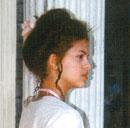Fashion in Cuba: a look into the 20th century
Skimming through the 20th century through the prism of fashion is not only a chance to find out the features of women's wear in every decade, but also a way to appraise the Cuban arts, culture and society.
During her wide-ranging career as a fashion designer, Piedad Subirat has delved extensively into this matter. This woman has provided an all-embracing peek into what le femmes have worn all through the last century
In Cuba, fashion has been closely linked to social status. From the days of the conquest and through most of the 19th century, Cuban women worn what was all the rage in the Old World. In the same breath, the country never sported a strong economy that would have brought about a powerful fashion movement as ladies preferred traveling to New York and Paris.
However, Cuba's 20th-century fashion put on some garments and robes of its own.
The 1900s, thus, brought in tow the late 19th-century way of dressing. Long skirts and lace-hemmed underskirts were first seen in American women. The year 1915 witnessed the first great divide in fashion. During the Great War, when women were forced to work in factories and offices, they started wearing blazers and shorter skirts. Then came the “woozy 20s”, the time when corsets were kissed goodbye and skirts were slashed like never before.
Those same eye-opening short skirts were rolled down to the ankles in the 1930s, in tightly-fitted garments coupled with the one-off hat. For its part, the coming of talkies and movie star Marlene Dietrich's influence made women wear trousers for countryside picnics and beach trips.
The Second World War made skirts shrink back up. Hats and blazers –usually known at the time as tailor suits- caught on.
With the strong sway of the war very much alive, Italian-born designer Elsa Skaporieli –who worked in Paris- found a source of inspiration in military jackets, suitcases and carryon, and added zippers to dresses, thus putting ordinary and snap-on buttons to gather dust on a shelf.
Back in the 1950s, Dior tossed out his new look. He rolled skirts back down below the knees and makeup invaded the ideal of beauty. Seine net girdles, bras and skirts started jamming women's wardrobes at the time.
As things were going down, actress Marilyn Monroe's beauty prototype was hitting on and off the big screen. This sparked off a boom in French fashion with such top designers as Balenciaga, Givenchy and Balmain dominating the runways, while Cuban photographer Korda started reflecting the world of fashion through the looks of Norka, the island nation's first top model.
In the 1960s, following the triumph of the Cuban Revolution, all established patterns were shattered and the breakup's ripple effects washed onto all aspects of life, including fashion. From the other side of the Atlantic, Mary Quant launched the miniskirt in Great Britain to the beat of The Beatles.
That was a time when nothing fitted the body and when geometrical lines, pop art, plastic, metal plates, boots and the conquest of the outer space were mirrored in the designs that were also ruling Cuban fashion.
The pop art, the Vietnam War, psychedelic colors and hippies called the shots back in the 70s. Miniskirts are still hot, though maxed-out skirts and bell-hemmed pants had already begun to capture the spotlight.
The blue jeans stormed the 1980s. Underwear epaulets and 40s-tyle sleeves were back in vogue. Cuban designers started making some pretty bold embossed fabrics simply known as prints. Artisans hanged racks of dresses made of dyed canvass and natural fibers in their fairs and tradeshows. Early-century knitting staged a comeback.
The 1980s also sired Cubamodas, an event that showcased the work of designers from the turf in the gardens of Le Maison –now renamed the House of Cuban Fashion.
Then came the last decade of the 20th century, bringing along high-tech textiles made of natural, synthetic or mixed fibers. New wardrobes are swung open and uneven, gashed skirts –either too long or too short- are hurled out. Tight-fitted pants and slacks bring back memories of past decades and roll down the curtain over a century marked by a free and eclectic style open to the same postmodern trends that hailed the new century.
Right now, Cuba de Moda (Cuba in Vogue), the powerhouse show that Cubavision Internacional aired for the first time roughly a year ago, is bent on spreading the very latest in Cuban fashion through the work of top-of-the-line designers who recreate the ongoing trends of the island nation's way of dressing.


































































